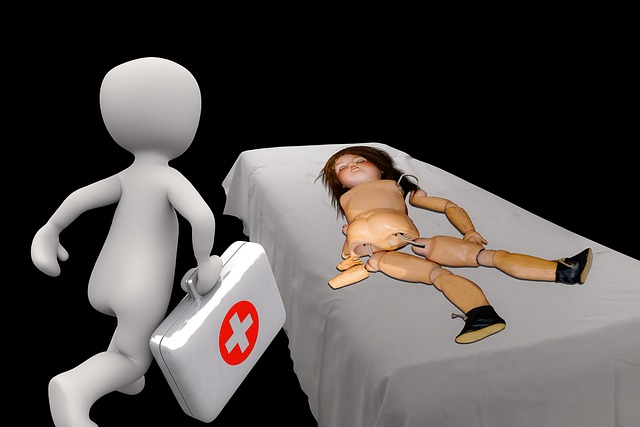Arthritis, fibromyalgia sufferers benefit from alternating heat and cold therapy, a natural way to manage pain, stiffness, and inflammation. Contrast baths, using hot and cold water, enhance blood circulation, reduce muscle soreness, and minimize inflammation. This ancient method offers immediate relief and promotes joint health through strategic temperature changes. Incorporating contrast baths into daily routines provides accessible, effective symptom management, complementing prescribed treatments with essential oils for enhanced relaxation.
“Experience relief from arthritis and fibromyalgia with contrast baths, a natural approach leveraging the power of alternating heat and cold. This ancient technique targets inflammation, a key factor in these chronic conditions. By rapidly switching between hot and cold water, contrast baths stimulate blood flow, reduce muscle tension, and ease joint pain.
Explore how this simple yet effective method can revolutionize your self-care routine and provide lasting comfort.”
Understanding Arthritis and Fibromyalgia: The Impact of Inflammation
Arthritis and fibromyalgia are chronic conditions that affect millions worldwide, primarily characterized by widespread pain, stiffness, and fatigue in muscles, joints, and bones. These conditions are often complex, with underlying causes rooted in a combination of factors, including genetics, environmental triggers, and immune system dysregulation. At the heart of these conditions’ discomfort is inflammation—a protective response designed to heal injury but, when persistent, can cause significant damage over time.
Inflammation involves a series of biochemical reactions that lead to increased blood flow, swelling, warmth, redness, and pain in affected areas. For arthritis and fibromyalgia sufferers, managing this inflammation is crucial for alleviating symptoms and improving quality of life. One effective approach gaining traction is the use of alternating heat and cold therapy, which has shown promise in reducing muscle spasms, easing stiffness, and mitigating painful episodes. By employing this technique—alternating between hot and cold treatments—individuals may experience a more balanced inflammatory response, offering some relief from the relentless symptoms that define these conditions.
What are Contrast Baths? A Natural Approach to Pain Management
Contrast baths, also known as alternative or thermotherapy, involve alternating between exposure to hot and cold water. This natural approach to pain management has gained popularity for its potential benefits in alleviating symptoms associated with conditions like arthritis and fibromyalgia. By strategically switching between heat and cold, contrast baths aim to reduce muscle soreness, improve blood circulation, and minimize inflammation.
The process typically involves soaking in a warm bath followed by a quick change to a cold rinse or shower. This cycle is repeated several times, offering a soothing yet stimulating experience. The alternating heat and cold help constrict and dilate blood vessels, promoting better flow. For individuals suffering from chronic pain, this can mean increased mobility and a reduction in painful symptoms, making contrast baths a promising home remedy worth exploring.
How Alternating Heat and Cold Can Reduce Inflammation and Provide Relief
Alternating between heat and cold therapy has been a traditional remedy for centuries, and it offers a powerful approach to managing arthritis and fibromyalgia symptoms. This ancient practice is based on the principle that contrasting temperatures can stimulate blood flow, reduce muscle tension, and alleviate inflammation. When you apply heat, blood vessels expand, increasing blood circulation and bringing more oxygen and nutrients to sore or stiff joints. This process helps relax muscles and can provide immediate relief from pain. On the other hand, cold therapy constricts blood vessels, reducing blood flow and minimizing swelling, which is particularly beneficial for controlling acute inflammation.
By alternating between these two temperatures, individuals with arthritis or fibromyalgia can experience a soothing effect on their bodies. The heat provides short-term pain relief and improves mobility, while the cold helps reduce any swelling or inflammation that may have developed as a result of prolonged pain and stiffness. This method of treatment allows for a more balanced approach to managing symptoms, offering both quick relief and long-term benefits by promoting overall joint health.
Practical Tips for Incorporating Contrast Baths into Your Routine
Incorporating contrast baths into your daily routine is an accessible and effective way to manage arthritis and fibromyalgia symptoms at home. Start by preparing your bath with alternating sections of warm and cold water. You can use a bathtub or even a large container, ensuring each section is distinct. Begin with a few minutes in the warmer water, allowing your body to relax and the heat to ease muscle tension and reduce inflammation. Then, transition to the colder water for a brief period, which helps constrict blood vessels, decreasing swelling and numbing painful areas.
Consistency is key; aim for several cycles of alternating heat and cold throughout your bath time. You can also experiment with different temperatures to find what works best for your body. Adding essential oils like eucalyptus or peppermint to the warm water can enhance relaxation and provide additional anti-inflammatory benefits. Remember, while contrast baths are a natural remedy, they should complement rather than replace any prescribed treatments for these conditions.
Contrast baths, leveraging the power of alternating heat and cold, offer a natural and effective way to manage arthritis and fibromyalgia symptoms by reducing inflammation. By incorporating this simple yet powerful technique into your routine, you can experience relief from chronic pain and enhance overall well-being. The science behind contrast baths supports their ability to stimulate blood circulation, ease muscle soreness, and promote faster recovery, making them a valuable tool in navigating these conditions.
